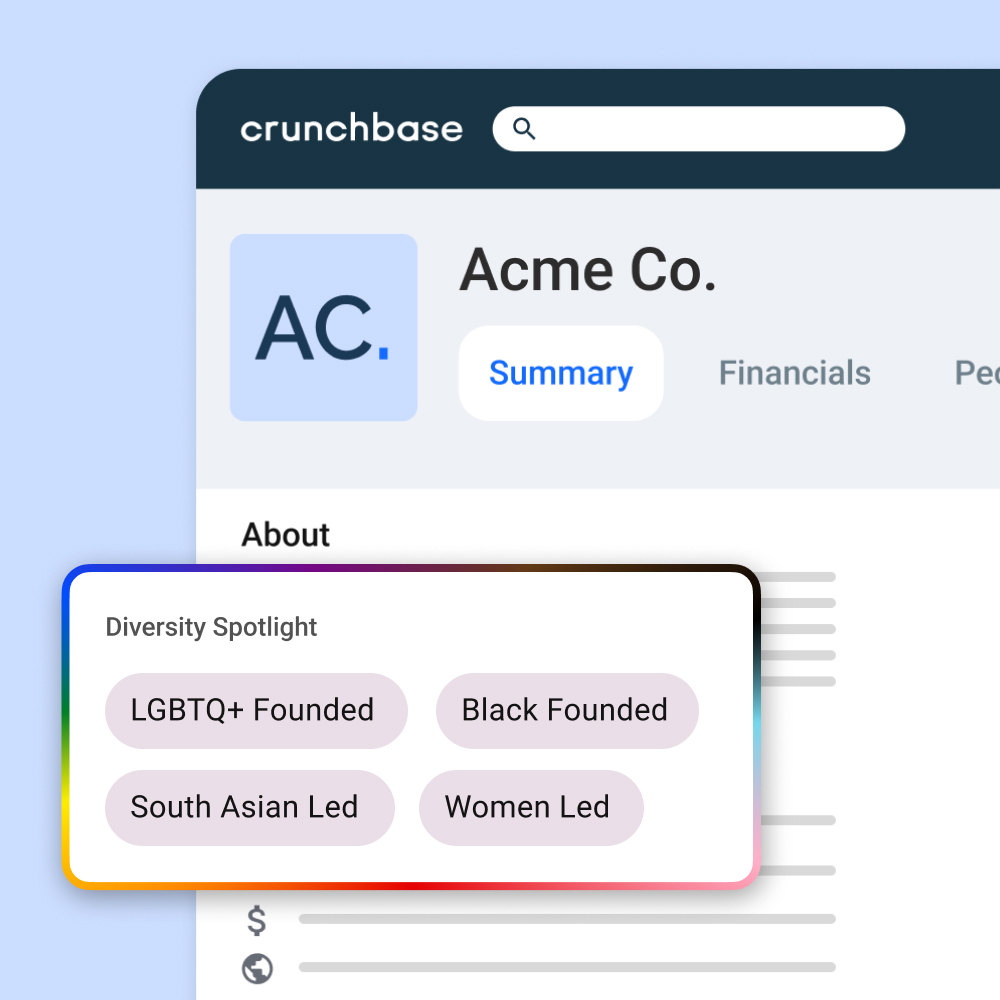Today we launched CrunchBase 2.0. From the UX to the underlying data model, we’ve rebuilt the entire platform. The new site aims to meet the increasing demands of our 2 million monthly users as well as the entire startup world, which today touches every part of the economy and every aspect of business. Our mission remains the same: to capture the world’s most comprehensive dataset of startup activity and make that data accessible to everyone.
This launch marks the first major update to CrunchBase since Mike Arrington asked TechCrunch engineers Henry Work and Mark McGranaghan to build a crowd-sourced startup database back in 2007. Over the years CrunchBase went mostly unchanged, while a few TechCrunch employees, notably Gene Teare, Vineet Thanedar and Anthony Nguyen, worked part time to keep up with the ever growing audience and dataset. Then, in early 2013, AOL kicked in resources to build a full-scale team around CrunchBase. Since then, we’ve been working on two tracks: building CrunchBase 2.0 and improving the dataset.
Today CrunchBase counts more than 530k profiles of people, companies, and investment groups. Every day thousands of profiles get updated thanks to a growing list of individual contributors, who numbered 65k in 2013, and the 850 members of the CrunchBase Venture Program. That constant flow of updates is what powers the CrunchBase Daily, which reaches 100K people each morning with a comprehensive roundup of startup fundings and acquisitions.
Capturing even more startup data was top of mind when we set out to build CrunchBase 2.0. Our first priority was to make it far easier for people to provide information about themselves, the companies they’ve worked at, and products that they work on. The new card based UX makes it easier than ever to find and update information, whether you are at your computer or on your mobile device. And unlike the old CrunchBase, almost every edit now goes live immediately.
We also aimed to create a platform that can capture the complex relationships between people, companies, products, and investors. Taking a page from Facebook, we built CrunchBase 2.0 around a graph database, which allows the platform to scale while giving us the ability to incorporate new datasets and adapt to an ever changing startup ecosystem. One graph-based feature: when users enter new data, the graph automatically ensures the data appears everywhere it belongs. We call this experience The Business Graph, and we believe it will be the foundation of a powerful business intelligence tool for everyone.
The launch of an entirely new platform does create some awkward moments. Editing CrunchBase remains open to anyone, but we are requiring everyone — including past users — to register anew using established social media accounts at Facebook, Twitter, Google+ or LinkedIn. We are doing this so the community can see the “true identity” of contributors and to help ensure high quality submissions. We will never post anything through these social services without your permission. The upgraded CrunchBase API will be launched soon and require re-registration. The original CrunchBase API will continue to operate until August but will not contain updates beyond April 20th, 2014. We hope these changes are not too bothersome and the improvements make them worthwhile.
CrunchBase 2.0 is a big step forward, but it’s just the beginning. We have a lot more improvements on the way, and they won’t be seven years coming. We’re interested in what you have to say about the new CrunchBase so we’ve put a feedback button on every page or you’re welcome to share your thoughts by email.







